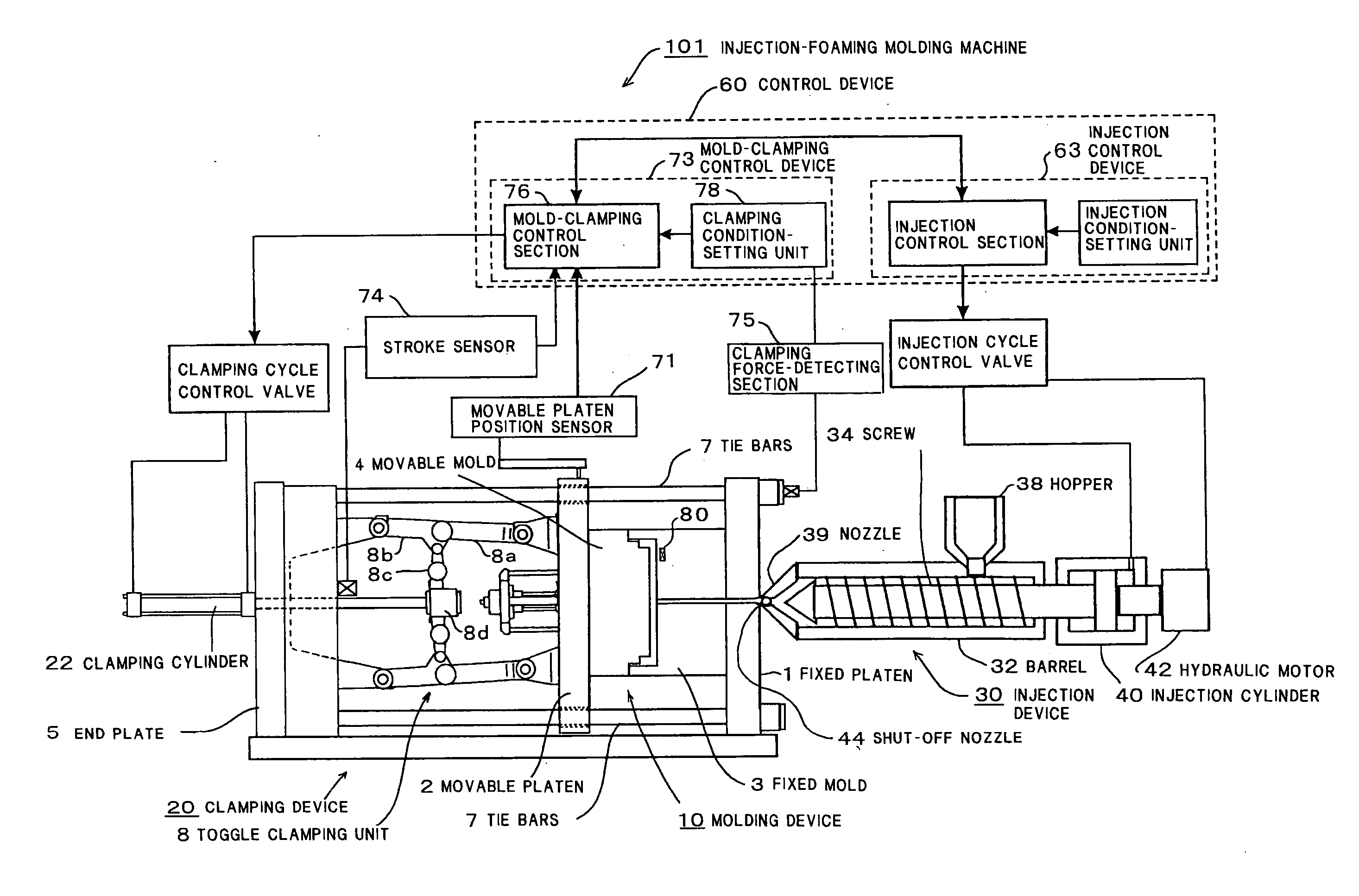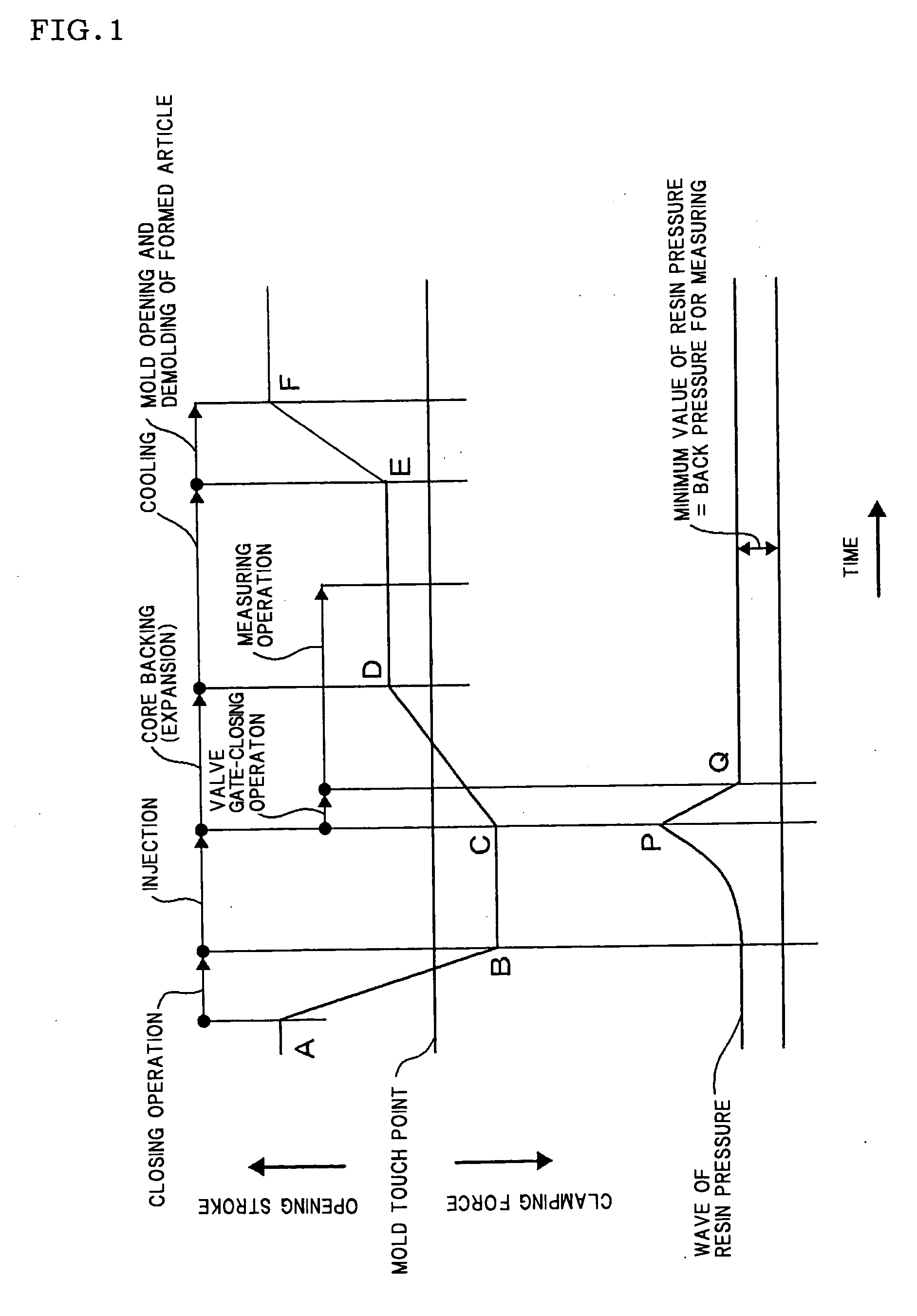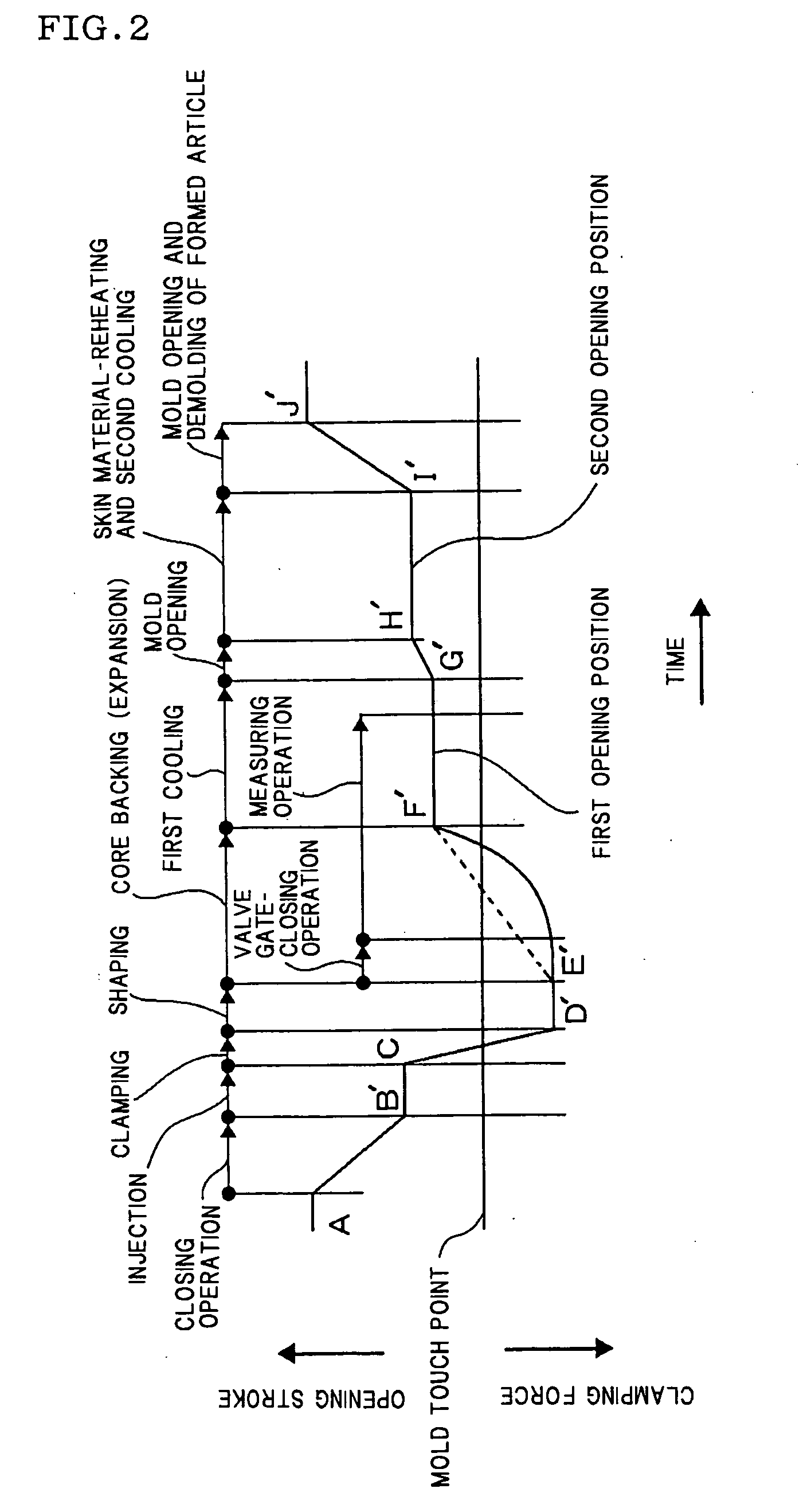Method for expansion injection molding
a technology of expansion injection and molding chamber, which is applied in the field of injection molding processes, can solve the problems of difficult control of foaming, the inability to completely fill the cavity with resin, and the almost complete unfoamed state of all molten resin, and achieves the effect of efficient manufacturing of lightweight plastic, good appearance and toughness
- Summary
- Abstract
- Description
- Claims
- Application Information
AI Technical Summary
Benefits of technology
Problems solved by technology
Method used
Image
Examples
examples
[0233] The first embodiment is further described with examples. Molding conditions common to examples and comparative examples relating to this embodiment are as described below.
(1) Molding Material (Resin Used)
[0234] A material used is as follows: a resin material containing polypropylene (MFR is equal to 40 g per ten minutes) and 3% of a foaming agent masterbatch, dry-blended therewith, containing sodium hydrogen carbonate.
[0235] A machine used is as follows: an electric injection molding machine, Model MD350DP, manufactured by Ube Machinery Corporation, ltd., including a pneumatic needle shut-off nozzle.
(3) Mold
[0236] A mold used is as follows: a mold, having a size of 200 mm square, for a flat plate test was used. The mold has a gate structure in which a single direct gate is placed at a side of an article to be formed.
Molding Conditions of Example 1
[0237] Temperature of Resin for Molding: 200° C.
[0238] Temperature of Mold: 40° C.
[0239] ...
example 3
[0260] The mold was closed by moving a mold to a position for achieving an opening stroke of 10 mm and maintained in this state, and a molten resin was injected into a cavity of the mold. After the injection was completed, the mold was clamped at a clamping speed of 50 mm / sec with a clamping force of 1000 kN.
[0261] The temperature for molding the resin was set to 200° C., the temperature of the mold was set to 40° C., the injection speed was set to 150 mm / sec, the injection time was set to one second, and the injection pressure was set to 100 MPa. The mold was opened to allow the resin to foam (core backing) one second later after the mold was closed (the shaping time was set to one second).
[0262] The foaming magnification was set to two (the cavity clearance is 1.5 mm before the mold is opened and the opening stroke is 1.5 mm when the resin is allowed to foam; hence, a formed article has a thickness of 3 mm).
[0263] The mold was opened to allow the resin to foam (core pulling was...
example 4
[0265] The pressure in the resin-reserving section located at the front end of the screw was controlled during the period from the completion of injection to the start of charging in such a manner that “a pressure of 100 MPa applied to the resin-reserving section at the completion of the injection was reduced to 10 MPa to which the back pressure was preset and the pressure in the resin-reserving section was maintained at 10 MPa until the charging was started”. Other conditions were the same as those described in Example 3.
PUM
| Property | Measurement | Unit |
|---|---|---|
| Length | aaaaa | aaaaa |
| Time | aaaaa | aaaaa |
| Length | aaaaa | aaaaa |
Abstract
Description
Claims
Application Information
 Login to View More
Login to View More - R&D
- Intellectual Property
- Life Sciences
- Materials
- Tech Scout
- Unparalleled Data Quality
- Higher Quality Content
- 60% Fewer Hallucinations
Browse by: Latest US Patents, China's latest patents, Technical Efficacy Thesaurus, Application Domain, Technology Topic, Popular Technical Reports.
© 2025 PatSnap. All rights reserved.Legal|Privacy policy|Modern Slavery Act Transparency Statement|Sitemap|About US| Contact US: help@patsnap.com



